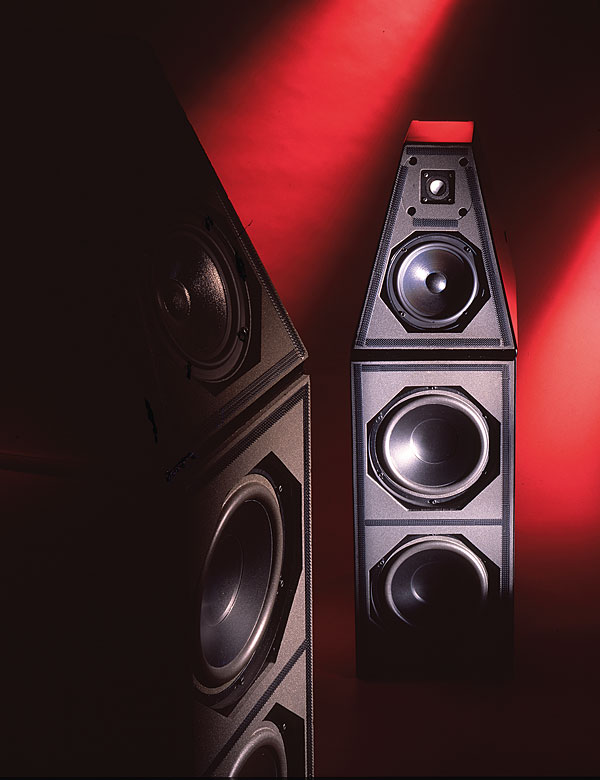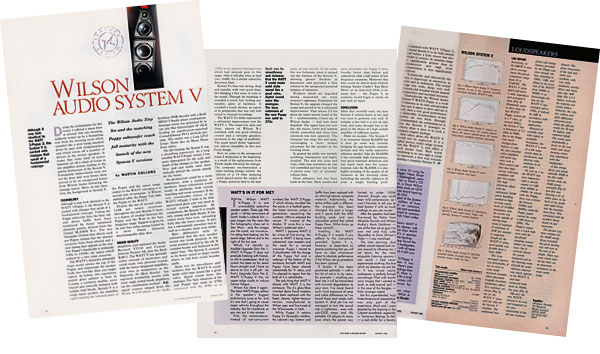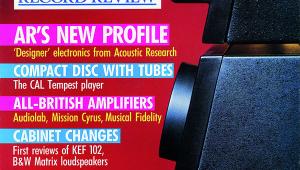Wilson Audio System V Loudspeaker Page 2
The bass extension of the new Puppy was solid to 27Hz (35Hz in my previous listening room which had unusual gain in this range) while it will play twice as loud (yes, 10dB!) for a similar subjective distortion limit.
The System V's bass was strong, deep and tuneful, with very good slam, this bringing a fine sense of scale to the sound. Through the midrange there was an absence of nasality, glare or hardness, though the presentation was a touch full. It sounded a touch distant, an aspect of its perspective that was very well suited to classical recordings.

The WATT V's treble represented a substantial improvement over that of the WATT 3 iteration. The sound was both open and clear, almost of Wilson X-1 standard, with very good sibilance control and a virtually grainless extension to the edge of audibility. The usual metal dome 'signature' was almost inaudible in this new Focal-sourced design.
No Mean Feat
Now we come to the unexpected bonus I mentioned at the beginning, as a result of the replacements from Wilson Audio following the damage. The company recommended a simple running change, namely the addition of a 15ohm damping resistor placed across the output of the Puppy crossover feed to the bass units, an easy retrofit. In my room, this was fortunate, since it opened out the balance of the System V, allowing greater freedom in placement while providing a firm solution to the unexpected perceived richness of character.
Products which are upgraded during assessment are every reviewer's nightmare. Fortunately for the System V, the upgrade changed the sound and proved to be a substantial improvement.
That unease I'd felt about the richer, heavier sound of the V – which, I must say, is uncharacteristic of Wilson Audio – had now been dispelled. The upper bass was now dry, the excess, lower mid warmth wholly controlled and more bass extension was now apparent. The character of the speakers was crisp, fast and open, and this encouraged a more normal placement for the speaker in the listening room.
In general the treble was similarly sparkling, transparent and highly detailed. The midrange was crisp and clean, while cone colorations were very well controlled and there was no hint of plastic cone 'cry' or 'plummy' softness to be heard.

Great advances had also been made when it came to the bass. More tuneful and more articulate, the Puppy V does breathe better than before and subjectively adds a half octave of low frequency extension. Moreover, that bass could be driven hard without limiting. The Stanley Clarke instrumental 'East River Drive' (from his 1993 album of the same name) at an indicated 250W is certainly no mean feat. The Puppy 3, in contrast, would begin to choke on just such an input.
Building Bridges
After that eventful start, the new System V settled down at last and was seen to perform very well. It remains a fact that it is not an easy load, and some thought has to be given to the choice of a high-current amplifier of sufficient quality.
Make no mistake. The Wilson Audio System V is no miniature Grand SLAMM, but is does go some way towards bridging the gap between ordinary mortals and this vastly expensive reference speaker. Like the SLAMM it has unusually high transparency, very good transient definition and can reach back into the source material. Like the SLAMM it is also highly revealing of the quality of all elements in the listening chain including the specific tightness of even a single binding post! When compared with the company's WATT 3/Puppy 2, I considered the System V to be both sweeter and richer-sounding, a little slower but also kinder to sources.
Its dynamic range is significantly greater than its predecessor too and high level compression is also significantly reduced. Technically and objectively the bass is improved, in extension, in slam and in definition. The soundstage was wide, deep, and very well focused and revealed wholly natural perspectives and recorded acoustics.
Rare Find
Undoubtedly the System V is a work of reference in its class and provided that care is taken to drive and site it well, then a very good performance is achievable. Loudspeakers of this quality are rare finds. Strongly recommended, the continuing joy is that the System V manages to achieve what it does it in such a compact elegant package.
And taken alone the WATT V should not be neglected. It is a higher power, wider ranging system than the WATT 3, and also offers a much kinder load. Certainly well worth considering in its own right, it could also represent a first step towards acquiring a full System V.


















































